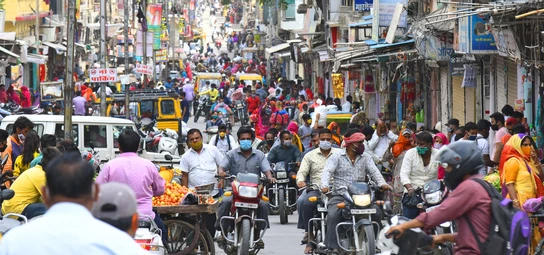
Mumbai: Let’s admit bluntly no one wants to remember the dark days of the Covid-19 pandemic. The mental fatigue of the catastrophe and the rush to “move on” is only expected.
Can the guard be dropped? That may cost us dearly. Covid-19 did not come with prior notice. Viruses – SARS-CoV2 that caused an unprecedented havoc or any other – are not going away.
It may sound astonishing, but Covid-19 still kills 1700 each week. No forecasts of “flattening the curve” have gone right. Vaccines, powered to fight newer strains, are doled out with great frequency but newer strains have re-emerged sometimes at their ferocious best and at others in tempered form. No medicines can still claim to be a complete cure against Covid-19.
Are other viruses any less fatal?
Mpox is a latest outbreak that the world is grappling with. The same story of Covid-19 repeats yet again – rich countries reluctant to spare some of their stockpile of vaccines for African nations like Congo that are in deep crisis.
On a bright note, although Mpox is seen in a growing number of countries, the latest outbreak has so far spared India. That, even when the new clade is more contagious than its past variant.
But other viruses are manifesting in more deadly forms.
The latest to hit a calamity is Chandipura virus infection (CHPV), that is known to cause sporadic cases of acute encephalitis syndrome (AES), mostly manifest in high fever, body ache, muscle pain and nausea. The brunt has been taken mostly by children below the age of 15. Gujarat has reported the highest cases across districts while some stray reports have emerged from Rajasthan, Madhya Pradesh and Maharashtra.
These signs are worrying to say the least.
Last month, the WHO said between June and mid-August, India reported 245 cases of acute encephalitis syndrome, including 82 deaths. That translates to a high case-fatality ratio of 33 per cent. Of these, 64 were confirmed cases of Chandipura virus.
Chandipura virus (the name derives from a small village in Maharashtra where it was first reported decades ago) is not new to India. It is endemic and yet there are no clear ways to tackle it. Survival can only be increased with early access to intensive care. The WHO says the case-fatality ratio from CHPV infection is high (56 per cent to 75 per cent), and there is no specific treatment or vaccine available. Chandipura virus infections are routinely reported during the monsoon season and is transmitted via sandflies, mosquitoes, and ticks. As rains recede cases may show a declining trend.
Are there better interventions to tackle a perennial crisis than be at the mercy of nature or take up an entirely reactive stance? Vinod Scaria, a renowned genomic scientist says India needs to urgently step up its virus surveillance systems. On social media X, he notes, “We don’t even know how widespread the disease is and how to prevent the next outbreak.”
Chandipura is not the only virus that shows lack of an epidemic preparedness plan in India. Last month, Nipah came back to haunt Kerala as a boy in his teens succumbed. A bat-borne, zoonotic disease, Nipah is known to have a very high case-fatality ratio of 75 per cent, which means higher deaths.
With a slew of viruses striking at different parts of the country some initiatives are being taking up. A health ministry release of Sept. 3 says under the National One Health Mission, a national mock drill Vishanu Yuddh Abhyas or Virus War Exercise was conducted in Rajasthan last month.
The idea was to assess the pandemic preparedness and the exercise aimed to evaluate the readiness and response of the National Joint Outbreak Response Team that includes healthcare experts. “A mock zoonotic disease outbreak scenario was created to simulate a real-world outbreak,” it notes. The multiple stakeholder drill addressed two key components. First, investigation and identification of the virus responsible for the mock outbreak and second, actions initiated to control the spread of illness across human and animal populations.
The statement says the Vishanu Yuddh Abhyas was a successful exercise that provided valuable insights to inform future strategies to enhance India’s preparedness and response to zoonotic disease outbreaks, fostering a coordinated and efficient approach across all relevant sectors.
Hopefully that optimistic view is seen in an equally robust ground action. Another positive start can be with strengthening the genome sequencing program that was at high priority at the peak of the Covid-19 pandemic but waned.
Who knows some virus may be mutating somewhere? They existed 3.5 billion years before humans evolved on the planet. They will exist after us. Pandemic preparedness is not a choice, it is an imperative. We would do better not to forget it.







